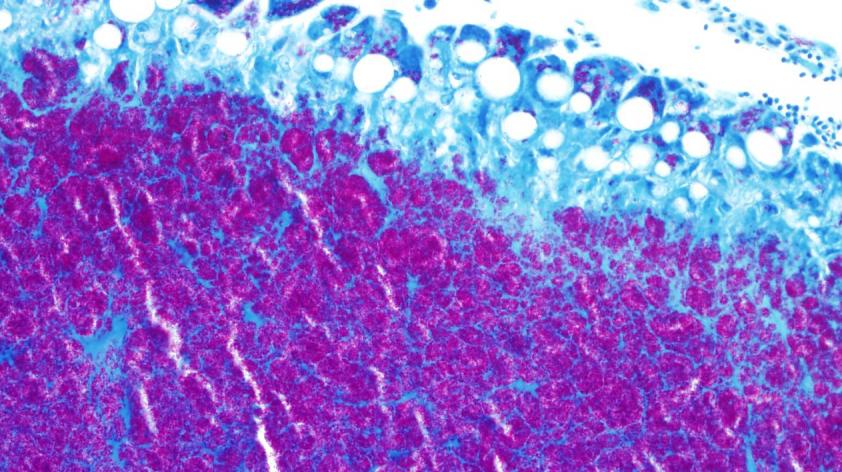
Pathology and Epidemiology in Action! Part 1 – The diagnosis
The diagnosis isn’t difficult to make. I’m looking through a microscope at a specially stained tissue section, and innumerable bright pink bacteria stand out sharply against the blue-stained background. This sample came from a longtime resident of one of our large aviaries, a male green imperial-pigeon estimated to be 25 years old or more – very old for a pigeon! This bird had recently been hospitalized, and his bloodwork showed some concerning changes, specifically an increase in numbers of a type of white blood cell called a monocyte. Monocytes are the blood precursor cell of the macrophage, literally “big eater,” a cell that responds to chronic infections, and this bird was suspected of having one of the most important.
The pathology service in Disease Investigations performs necropsies (animal autopsies) on all animals that die at the zoo to learn as much as we can about any diseases they might have. This allows for better care and treatment of the other animals in our collection. During necropsy of this pigeon, there were tan masses around the heart and in the lung and kidney. Sections of these masses and other tissues were sampled for histology (microscopic examination of tissues) and bacterial culture. When I get the histologic slides back a few days later, I can tell that the masses are granulomas, a type of inflammatory reaction, and that they are filled with bacteria. A special stain called a Ziehl-Neelsen acid-fast stain confirms my suspicion that these are mycobacteria and that this is now officially a case of avian mycobacteriosis.
What is avian mycobacteriosis and why is it important? Read more about it in Part 2 of Pathology and Epidemiology in Action!













